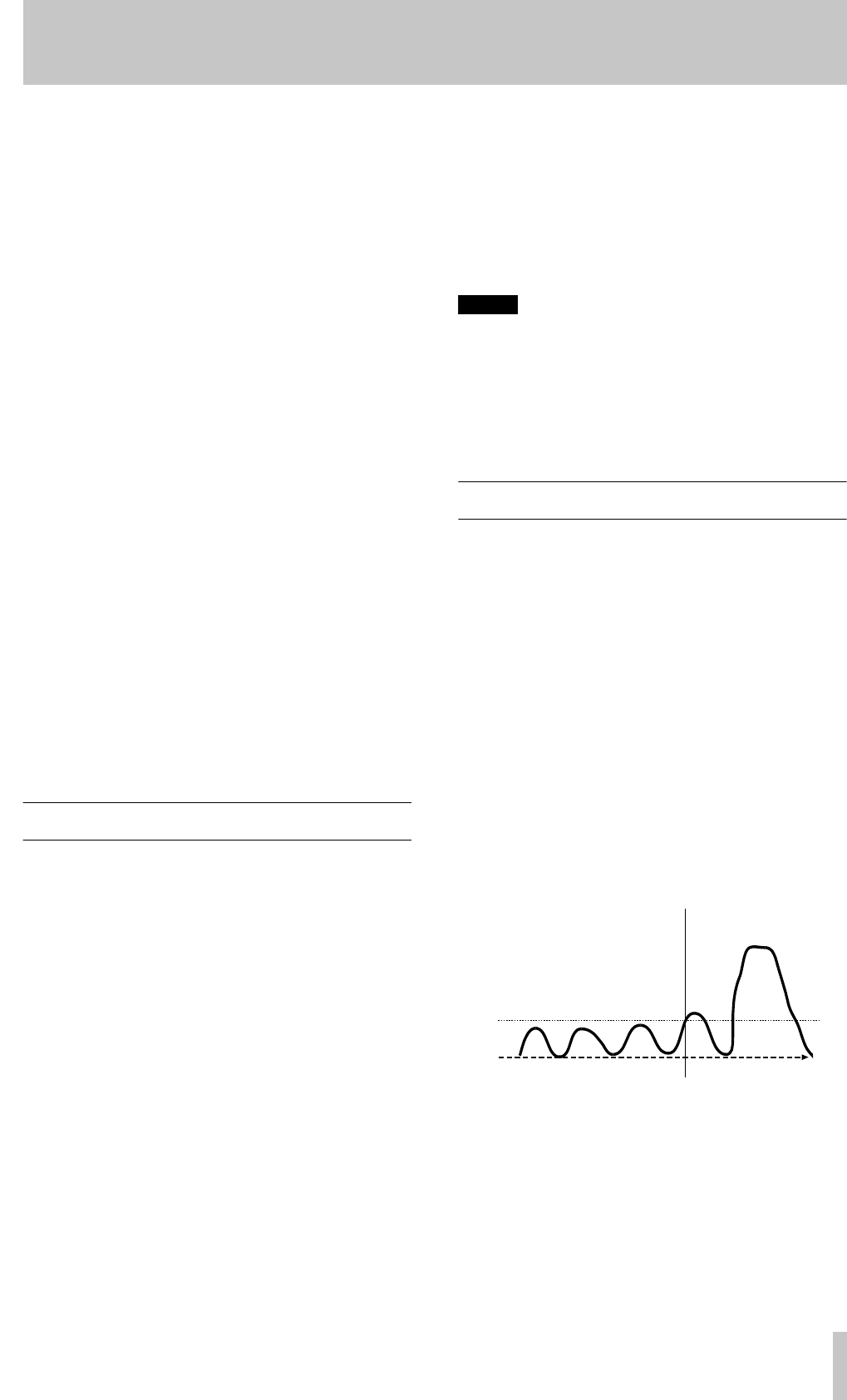
4 – Recording—Copy-protection
TASCAM CD-RW2000
25
1
With a recordable disc loaded, press the
RECORD
key (
J
or
D
) so that the unit enters
record ready mode.
2
Start the source material, and press the
FADER
key (
5
or
8
).
The display shows
FADE IN
for the time
specified in the menu item above.
As the fade progresses, the monitored signal
gradually becomes louder, reflecting the level
recorded on disc.
To perform a fade-out:
1
While recording, press the
FADER
key (
5
or
8
).
The display shows
FADE OUT
for the time
specified in the menu above.
As the fade progresses, the monitored signal
gradually becomes quieter, reflecting the level
recorded on disc.
2
When the end of the fade-out time is reached,
the unit goes into record ready mode. Record-
ing can be restarted with the
FADER
key or the
PLAY
or
PAUSE
keys.
It is not possible to change the fade-in and fade-out
times to new values while recording is in progress.
Fades are also possible in digital direct mode (4.3.3,
“Digital direct”).
4.4 Copy-protection
The CD-RW2000 allows copy-protection to be
applied to the discs produced. Naturally, the copy-
protection applies only to digital-to-digital copies.
There are three settings:
•
FREE
(may be freely copied), where no copy-
protection is applied to the recorded disc.
•
1GEN
(single-generation copying), where one
digital copy (“child”) can be made from the
recorded disc, but no digital copies (“grandchil-
dren”) can be made from the child.
•
PROH
(copy prohibited) which prevents any digi-
tal copies being made from the recorded disc
1
Press the
MENU
key (
9
or
6
) repeatedly until
the display shows
COPY ID>XXXX
,
where
XXXX
is the current setting for copy-
protection as shown above.
2
Turn the
MULTI DIAL
control
B
or use the
SKIP
keys
H
to change the copy-protection
setting.
NOTE
Copy-protection applies on a ““per-track”, not a per-disc
basis. This means that you can apply different copy-protec-
tion levels to different tracks (but you can’t apply different
copy-protection levels to different parts of the same track).
If copy-protection is important to your work, you may want
to check this setting every time you make a recording, to
ensure that you have the protection level that you want.
4.5 Rehearsal
There are two areas in which the unit’s rehearsal
facilities can be used: synchronized recording (4.3.1,
“Synchronized recording”) and automatic track divi-
sion (4.3.2, “Automatic track division”).
The purpose of the rehearsal facilities is to allow you
to override the automatic synchronized recording and
track division facilities where necessary.
Here is an example where this facility may be of
value:
A piece has been recorded on DAT, with a verbal
count-in immediately prior to the first drum beat.
This count-in is not to be recorded as a part of the CD
track, but the threshold level has been set to a level
where the fourth count will trigger recording (–24 dB
— this is the limit of the threshold sensitivity and
cannot be adjusted further).
When the rehearsal facility is used, the source is cued
up and played, and the first few seconds of the track
"1" "2" "3"
Drum beat
"4"
Sync recording starts here
S_LVL
